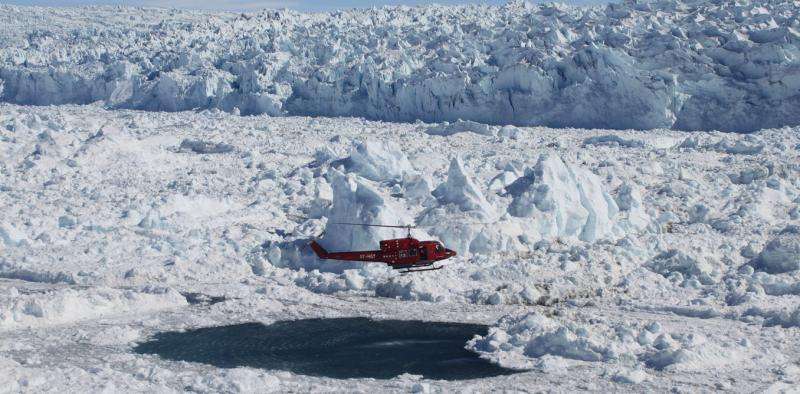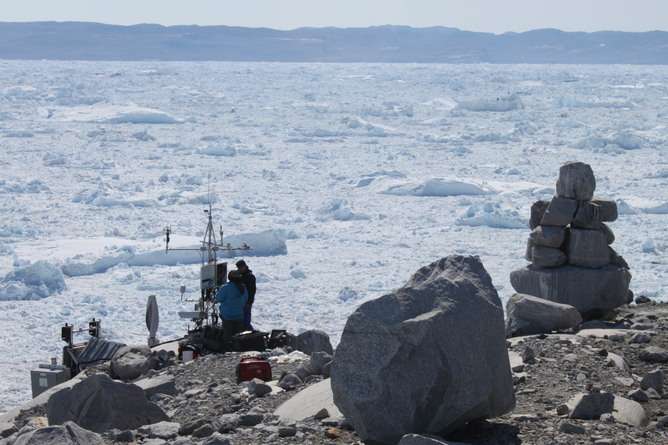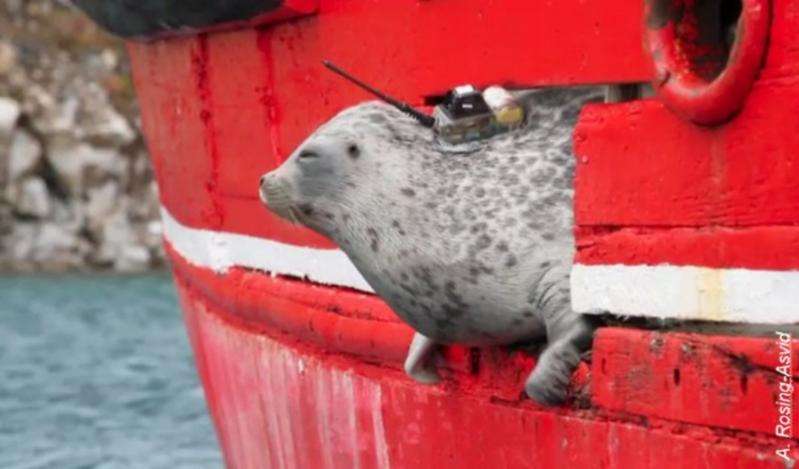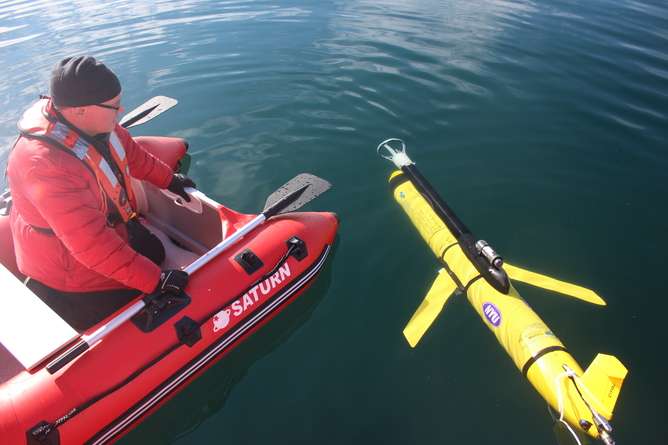Mathematician collects ocean and glacier data in the field to make climate models in the lab

Curious passersby press their faces up to my lab's window in lower Manhattan as our rotating table swings into action.
"What are you doing?" someone mimes.
I point to our video wall, which explains our work. Here in our geophysical fluids lab at New York University, we study the basic principles of how the Earth's fluids behave. Out in the field, in Greenland and Antarctica, we gather data that we use to build ever more accurate computer models.
My research focuses on global sea level change. If the main ice sheets of Greenland and Antarctica even partially disintegrate, the consequences for society are immense – they hold about 70 meters of potential sea level rise. Even a relatively modest amount of disintegration would put places like coastal Florida, New York City or Abu Dhabi partially underwater. In fact, we've established a global sea level research center at NYU Abu Dhabi. The goal of all our activities is to gain better knowledge of how ice sheets and oceans interact. To tease apart the puzzle, we need to travel to where the ice is and collect data.
So that's what we do. We travel many thousands of miles from our NYU lab toward both the North and South poles so we can see what's happening on the glacier and in the ocean off Greenland and Antarctica. It's a long journey via the US Air National Guard ski-equipped Hercules plane, twin otters and helicopters. Once we finally get there, our goal is to measure the ocean water's properties – including temperature and salinity – from as close to the calving front as possible. That's the edge of the ice sheet, where icebergs are breaking off from the glacier front and there are numerous crevasses. Obviously it's a dangerous place to be doing science, so we have to get creative to figure out how to gather the data.
One of those ways is by attaching a small instrument to the backs of the local seals that frequent the fjords of Greenland. Working with our colleagues at the Greenland Institute of Natural Resources, we tag seals and release them a few minutes later. The tag weighs less than a pound and is attached with a nontoxic glue to the seal's coat so it doesn't have a negative effect on its daily life.

The seals give us many more measurements than we can get using traditional methods, such as ship-based CTD (conductivity, temperature and depth) or helicopter-based CTD probes. In addition, they're swimming and diving in areas that are sometimes inaccessible to us – and sending back data we couldn't otherwise get. Every time the seal surfaces, the device makes a satellite phone call to our rooftop weather station at NYU and downloads CTD data. We usually tag six seals each season. The device drops off when the seal molts, or sheds its coat, about a year later.
We've deployed many other instruments to help monitor the oceans around Greenland and Antarctica, including ocean sea floor moorings and ocean gliders. These devices record ocean properties on the sea floor and through the water column throughout the year. They're challenging to deploy and recover because of the many icebergs in the area.
We also monitor glacier fronts using seismic arrays and radars, both on land. The information gathered from these devices tells us where the glacier is breaking and how fast it's going when calving happens. In our NYU lab, we monitor the Antarctic and Greenland fjords from our computers, thanks to the autonomous weather stations and cameras we've deployed. Over the years, we've built up a nice complement of instruments on land and at sea, and now we're starting to see some excellent data sets coming together.
But gathering all these data is just part of the process. Once we're back home, our first step is always basic analysis to see if we can spot any trends in the data we've collected. For instance, is the ocean water warming or cooling? In fact, we detected a warming event in our data from West Greenland in the late 1990s which helped explain glacier retreat and speed-up at that time.
Next, we use the data to help develop a computer model of the glacier and ocean interaction. When the model simulations look like real world observations, then we have confidence that the computer models are fairly accurately simulating reality. This ultimately puts us on a path to projecting global sea level rise.

This summer, just as we were finishing our week-long Greenland field expedition, we had a major calving event, and the entire area in front of the glacier was ice-free. That doesn't happen often, and it's never happened while we've been there. Now we're trying to work with local townspeople who can fly out and take measurements in the brief time the area is ice-free for us – measurements have never been taken that close to the calving front.
These places are so breathtakingly beautiful, you sometimes have to stop and remind yourself how important it is to study them and understand the processes that are happening. The hope is that our work will help us be able to better adapt and mitigate if and when sea level changes.

David Holland is Professor of Mathematics at Center for Atmosphere Ocean Science at New York University.
Denise Holland is Field and Logistics Coordinator at New York University.
Source: The Conversation
This story is published courtesy of The Conversation (under Creative Commons-Attribution/No derivatives).![]()


















